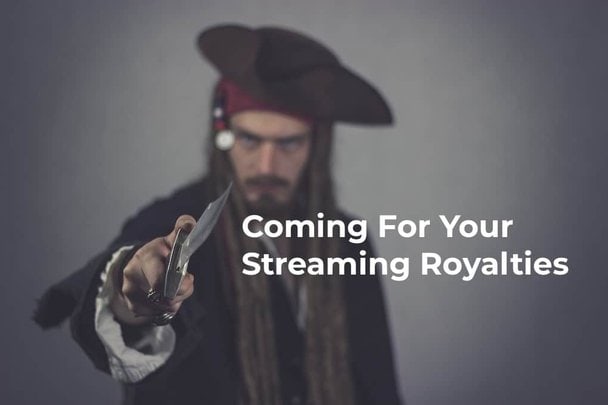Music piracy looks different in 2023 and it costs artists millions
From copying CDs to Napster to ripping YouTube audio, music piracy has long been a problem. As we begin 2023, we see piracy taking on a new form, and it’s no less insidious.
by Bobby Owsinski of Music 3.0
Way back in the old music download days music piracy ran rampant and the music industry freaked out as a result. This caused a lot of irrational moves, the most egregious being lawsuits against its own customers. Once streaming came along the business released a sigh of relief because those big bad pirates were finally held at bay. But not for long. A new study from France’s Centre National de Musique (CNM), a part of its Ministry of Culture and Communication, found that music piracy has reared its ugly head again, but in a different form.

It’s Not A Small Number
In a nutshell, the study found that at least 1% to 3% of music streams consumed in France are fraudulent, designed to siphon royalty money away from legitimate artists. That means between 1 and 3 billion streams are false in France alone, which means that some “bad actors” are making between $5.8 and $17.4 million that could have gone to legitimate artists and songwriters.
If you extrapolate that out worldwide though, as Music Business Worldwide did, the figure becomes mind-boggling 1% equals about 34 billion streams (equaling $157 million), while 3% represents 102 billion streams (equaling $507 million).
Think of that for a second. That’s a half-billion dollars paid out to illegitimate robots and streaming farms!
Even scarier is the fact that the 1 to 3% only represents the fake streams that were caught. Who knows how many have gone undetected.
How An Artist Is Affected
The study received its data from Spotify, Deezer, and Qobuz, plus “a panel of distributors” that included Universal, Sony, Warner, Believe and Wagram. This represented more than 90% of the top 10,000 most listened-to songs on Spotify and more than 75% of the overall volume of streams on Deezer.
84.5% of fraudulent streams were hip-hop, but that’s because that’s the biggest genre in France.
Just to clarify, artists are not paid via the stream. When you see a per-stream figure that’s just the average. Artists are actually paid on market-share. At the end of each month all the revenue goes into a big pot, which is then carved up according to the streaming strength of the artist. Fake artists and streams cut into the monthly grand total of revenue, leaving less to spread around to all the real artists and songwriters.
To be sure, most music distribution platforms are doing their best to eliminate music piracy and fraud, but the pirates are getting more sophisticated as each day passes. In the end, it hurts your pocketbook regardless where you stand on the streaming success ladder.
Bobby Owsinski is a producer/engineer, author and coach. He has authored 24 books on recording, music, the music business and social media.
Read more: https://music3point0.com/2023/01/20/yes-music-piracy-is-still-here-but-in-another-form/#ixzz7r0TbJewF
Under Creative Commons License: Attribution Non-Commercial Share Alike
PLEASE NOTE: IN CalypsoRoom we speak directly with artists and make sure they are the copyright owner before uploading any music on the platform. Check it out: https://www.calypsoroom.com/Faq.html
Toques mais populares 2023.